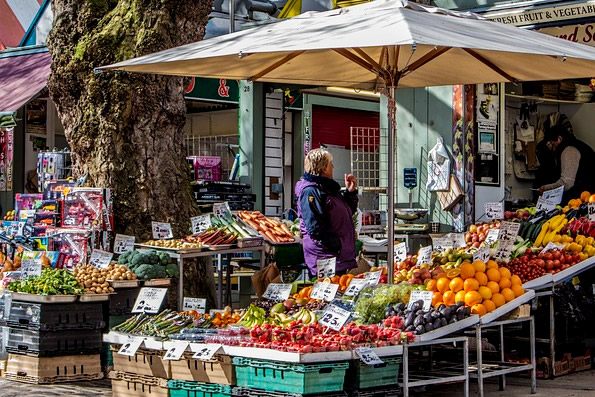昨日から「How to make fruit and vegetables last longer -「野菜や果物を長持ちさせる方法」を読んでいます。

・「野菜や果物を長持ちさせる方法」(1)
Wasted meat contributes the most to these numbers, as the energy required to produce it is typically many times greater than plant-based foods.
食肉は、その生産に必要なエネルギーが植物性食品の何倍もあるため、この数字に最も貢献している。
Throw out 100g of steak and you might have just squandered as much as the equivalent of 10kg of CO2.
100gのステーキを捨てれば、10kgのCO2に相当する量を浪費することになるのだ。
By mass, however, it’s fruits and vegetables that make up for the biggest pile of wasted food:
しかし大量に廃棄される食品の中で、最も多いのは野菜と果物で、
roughly half a billion tonnes per year.
年間およそ5億トンに及ぶ。
In the UK, oranges and mandarins are number one among wasted produce, followed by apples and tomatoes.
英国では、廃棄される農産物の1位はオレンジとマンダリンで、次いでリンゴ、トマトとなっている。
So how can we best preserve our fruit and veg to ensure more gets to our plates?
ではどうすれば、より多くの野菜や果物を食卓に並べられるだろうか?
Among the tools that producers currently have to reduce food waste, many involve the use of plastics and chemicals.
現在、生産者が食品廃棄物を減らすために用いるツールの中には、プラスチックや化学物質を使ったものが多くある。
A Swiss study published in 2022 showed that the climate benefits of wrapping cucumbers in plastic are almost five times higher than the negative climate impacts of the packaging itself.
2022年に発表されたスイスの研究によると、キュウリをプラスチックで包むことによる気候への恩恵は、包装そのものによる気候へのマイナス影響の約5倍であることが明らかになった。
Chemicals such as chlorine, hydrogen peroxide and trisodium phosphate, meanwhile, have long been used to kill various microorganisms on fresh produce to prevent spoilage and extend shelf lives.
一方、塩素、過酸化水素、リン酸三ナトリウムなどの化学物質は、古くから生鮮食品の腐敗を防ぎ、保存期間を延ばすべく、多様な微生物を殺すために使われてきた。
オレンジ、マンダリン、リンゴにトマト・・・傷む前に食べきるのが難しい食品って感じなんでしょうか。
どれも美味しそうですが、買い物をする側も必要量を必要な分だけ、というのは結構難しいものなんですね。
理由は単純明快!「少ないコストでしっかり楽しく学べるから」。
私自身の経験(高機能でビックリ)をびっしり書いていますので、良かったら読んでみてください。
下のバナーからどうぞ!






